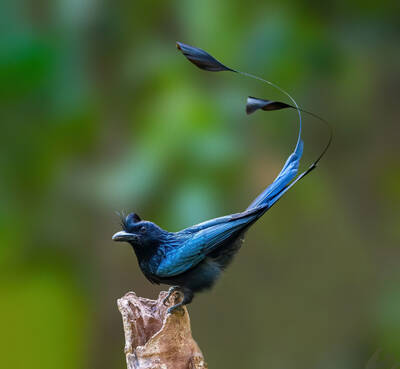
Greater Racket-tailed Drongo has 13 subspecies.Greater Racket-tailed Drongo is mainly a resident bird, and some are summer migrants, wandering elsewhere in winter. The Great Discus often rests on a solitary tree in an open space. Occasionally, it suddenly takes off, quickly chases the flying insects...
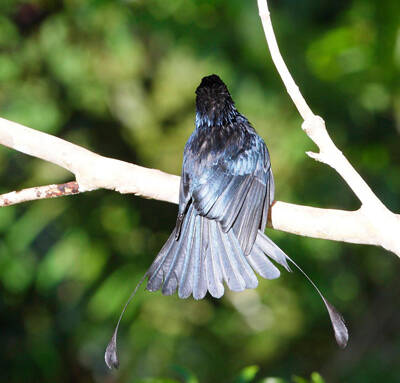
Lesser Racket-tailed Drongo has four subspecies.Lesser Racket-tailed Drongo often stays on the top of isolated trees for a long time, and sometimes suddenly flies up quickly to catch flying insects in the air, or fly through dense trees. It flies slowly, with the "disk-shaped tail" of the...
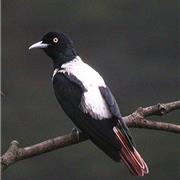
Silver Oriole, a medium-sized songbird, is a single species with no subspecies differentiation. It was once a subspecies of the red oriole.Silver Oriole is a summer migratory bird. Arboreal, often moving alone or in pairs, sometimes seen in loose groups of 3-5. Mainly active in the canopy of tall tr...
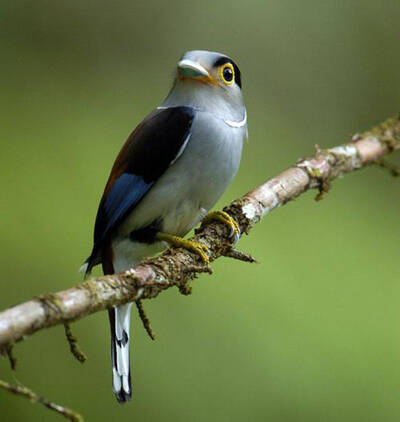
Silver-breasted Broadbill, also known as Silver-breasted Broadbill, has 10 subspecies.Silver-breasted Broadbill often moves in small groups, especially groups of 10-20 or more. They often move under the canopy. It likes to stay still, is not good at jumping and singing, and its singing sound is low...
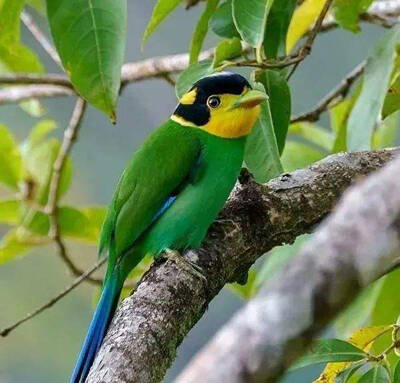
The foreign name of the long-tailed broadbill is Long-tailed Broadbill, and there are 5 subspecies.Long-tailed broadbill is often seen in groups of more than ten or even twenty or thirty, foraging; they mainly feed on insects and fruits. They usually live quietly on bushes or small trees in the shad...
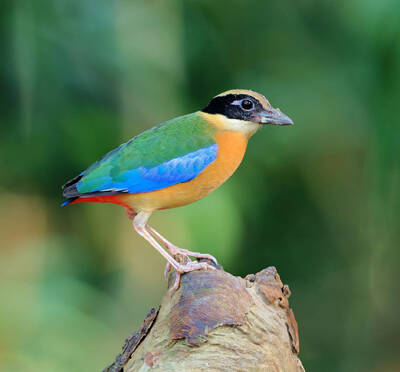
The blue-winged pitta is called Indian Pitta in foreign language, and has no subspecies.Blue-winged pitta is often seen in groups of 10-20 under the canopy, or on nearby branches. It likes lowland shrubs and secondary forests. It jumps on the ground like a thrush. It is active in the shade and wet p...
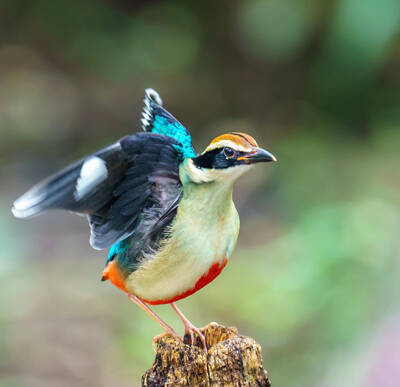
Fairy Pitta, also known as Fairy Pitta, has two subspecies.Fairy Pitta is a summer migratory bird and a traveling bird. It often moves alone in the grass under the bushes, foraging while walking on the ground. It is agile, alert and timid, good at jumping, and often jumps and walks on the ground. It...
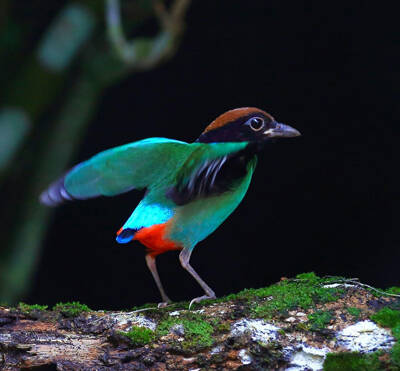
The green-breasted pitta is called Hooded Pitta in English, and has 12 subspecies.The green-breasted pitta is mostly seen alone, and sometimes 2~3 are seen together. It often digs up fallen leaves in wet leaf houses, frequently turning over dead branches and leaves on the ground with its feet to fin...
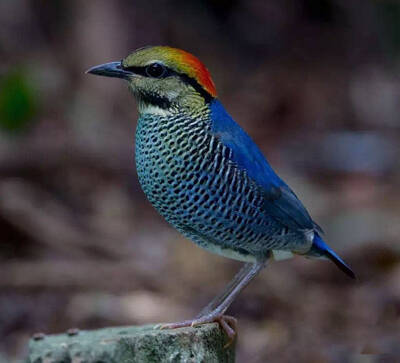
Blue Pitta, also known as Blue Pitta, has three subspecies.Blue Pitta runs on the ground, foraging for food, and feeds mainly on insects such as beetles. They are resident birds and rarely fly. In the Indian subcontinent, due to the local seasonal climate, there is a phenomenon of short-term migrati...
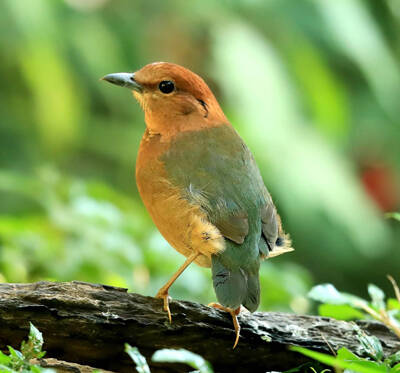
The Rusty-naped Pitta is called Rusty-naped Pitta in English, and has 4 subspecies.The Chestnut-headed Pitta does not form groups, and is seen alone or in pairs in winter or summer. The legs are long and strong, and they are good at running and jumping. They frequently use their feet to turn over th...
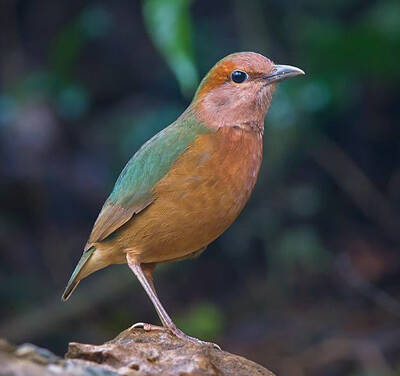
Blue-rumped Pitta, also known as Blue-rumped Pitta, has 5 subspecies.Blue-rumped Pitta usually hides in bushes and grasses, and when frightened, it flies a short distance along the ground to escape. The sound is subtle. It often digs up fallen leaves in the wet ground, frequently turning over the de...
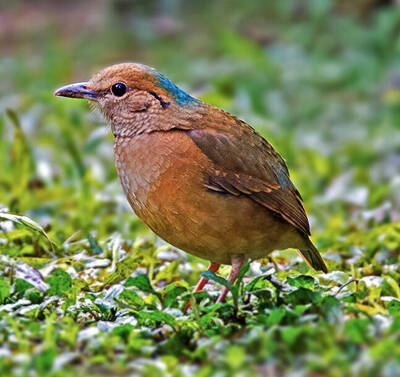
Blue-naped Pitta, also known as Blue-naped Pitta, is a medium-sized bird of the Passeriformes family, with two subspecies.Blue-necked Pittas often move alone or in pairs, mostly on the ground under the forest or among the bushes, and are more active in the early morning and evening. They often move...

Double-braided Pitta, with no subspecies.Double-braided Pitta forages in bamboo forests and bushes, using its powerful claws and beak to flip dead leaves on the ground to find food, feeding on insects. They often move on the ground. Because their feathers are very similar to dead leaves and they are...

Starlings are common in southern my country. They are not only important agricultural and forestry birds, but also popular caged birds. They can imitate the calls of other birds and simple human speech. They are widely caged in China and have been introduced to the Philippines and Canada.They like t...
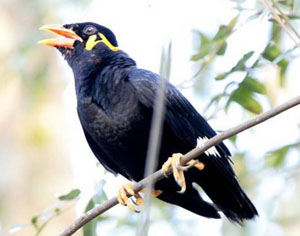
The characteristic of the myna is the orange-yellow wattles and hems on the sides of the head, which are similar for males and females. It is good at singing, with loud and clear voices, and can imitate and produce a variety of melodious tones. It often gathers in small groups of 3-5, and in winter...
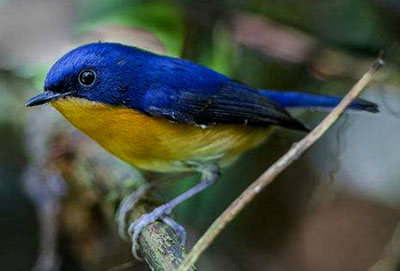
The body of the Dwarf Blue Flycatcher is very small, about 10 cm; the beak is narrow, obviously narrower than other flycatchers. It can reach an altitude of 3,000 meters. It likes to live in the lower branches and leaves of trees in primeval forests and other places, occasionally foraging on the gro...
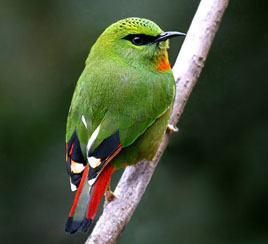
The Fire-tailed Green Thrush is a small bird of the family Ornithogalidae and the genus Green Thrush, with a body length of 11-14 cm. The upper body is green, with black scaly spots from the top of the head to the nape, black before and behind the eyes, and yellow-green eyebrow stripes. The wings ar...
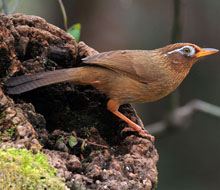
The thrush is a medium-sized bird in the class Aves and family Thrush. Body length is about 23 cm. The upper body is olive in color, the top of the head to the upper back is tan with black vertical stripes, the eye circles are white, and a narrow stripe is formed along the upper edge and extends bac...

Pink-tailed Bunting is a species of the family Pinnipedae, with no subspecies.Pink-tailed Bunting is usually silent. Its call is a rapid chitri-chitri-chitri-chitri. It emits a clear, silvery bell-like call of "kvuit, kvuit" when flying or giving warning. The red bunting usually moves alon...
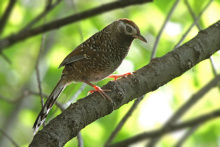
White-speckled Laughingthrush is a species endemic to southwestern China. The habits of the White-speckled Laughingthrush are little known. Some authors classify this species as a subspecies of the Spot-backed Laughingthrush. Globally vulnerable (Collar et al1994).Listed in the first lev...